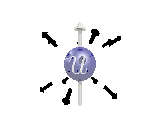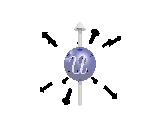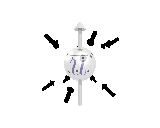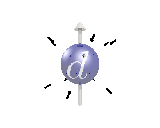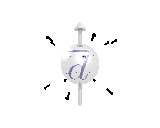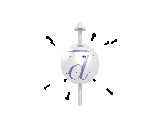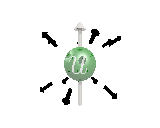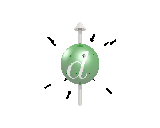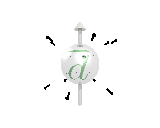The Standard Model
Here we're briefly described the particles that make up the current standard modelof physics. According to a classic thoerem of group theory by Wigner, particles can be completely classified by there spin (angular momentum, much like a spinning top except that
elementary particles are pointlike), and there mass. Another theorem of
quantum mechanics called the pauli principle, quickly divides the
particles into Fermions with spin 1/2 and bosons with spin 0 or 1.
Fermions because of their spin are conserved in number, the cannot appear
and disappear, except by pair production of annilhilations with there corresponding anti-fermion. Fermions also obey the law (Pauli's principle), that they can never overlap with another identical fermion. Thus Fermions our the particles that make up matter, they have the capacity from solid material for instance. In the standard model all spin-1 bosons represent the force between fermions, and are in fact added to the theory in order to the make the maths of transformations between fermions, obey the same laws everywhere and everywhen, a principle known as gauge symmetry..
The Bosons, or force carrying particlesThe standard model has just 3 forces (it
can't deal with gravity yet), caused by, 1 photon (the quanta of light
and the electromagnetic force), 8 gluons which swap the colors of the quarks
and cause the strong nuclear force. A pair of W particles, one positive
one negative, which cause the weak nuclear decays, by transforming one
type of quark to another or one type of lepton to another. And finally
a Z particle which is like a slightly heavy neutral W particle, but which doesn't transform the particles it interacts with. Apart from these are unknown number of so far undetected Higgs particles which have 0-spin and are added to the model to give of other particles masses. We won't discuss the Higgs particles further here. The Matter Particles or Fermions 1. - The Leptons
 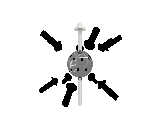   Electrons are sources of the electromagnetic field. We've drawn the field line in black, the incoming arrows represent the fact the electron has negative charge, while the outgoing arrows on the anti-electron or positron, (drawn in inverse colors), indicate a positive charge. We also drawn a spin axis (the metal pole), with all are particles travelling up the page, so that we can easierly see the difference between left-handed (anti-clockwise) and right-handed (clockwise) spin particles. The direction of spin is important as we see with the neutrino below. The neutrino is the one particle in the standard model that doesn't seem to be of Dirac type. We see that left handed neutrino and right handed antineutrino, but not the other too. How this can be is what my paper tries to address.  
 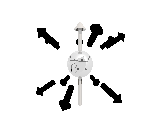     Matter Particles, Fermions. 2. The Quarks
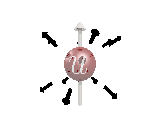 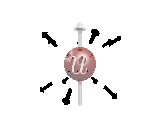 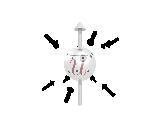 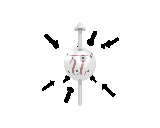   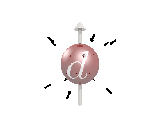    Three Generations of Matter ParticlesIf all that wasn't enough we have another two copies of above particles, each generation heavier than the last, (the neutrino masses unknown). The electrons, is partnered with the muon, and then the tau or tauon. The up quark with the charm and then the top quark, and the down quark with the strange and then the bottom quark. There is also one neutrino for each different kind of electrons. So in it total (ignoring colors, and spin, and antimater) we get a table like. 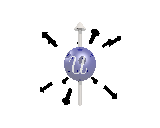 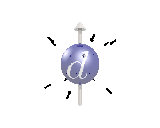  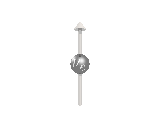 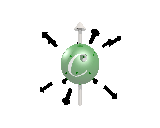  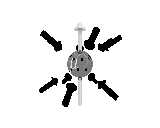  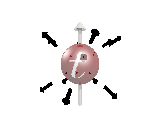 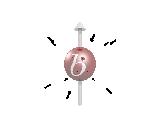 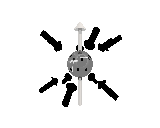 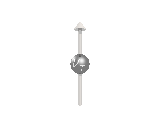 Why these states and no others? Grand Unified Theories
For my own guess at a Grand Unified Theory click here | |||||||||||||||||||||||||||||||||||||||||||||||||||||||||||||||||||||||||||||||||||||||||||||||||||||||||||||||||||||||||||||||||||||||||||||||||||||||||||||||||||||||||||||||||||||||||||||||||||||||||||||||||||||||||||||||||||||||||||||||||||||||||||||||||||||||||||||||||||||||||||||||||||||||||||||||||||||||||||||||||||||||||||||||||||||||||||||||||||||||||||||||||||||||||||||||||||||||||||||||||||||||||||||||||||||||||||||||||||||||||||||||||||||||||||||||||||||||||||||||||||||||||||||||||||||||||||||||||||||||||||||||||||||||||||||||||||||||||||||||||||||||||||||||||||||||||||||||||||||||||||||||||||||||||||||||||||||||||||||||||||||||||||||||||||||||||||||||||||||||||||||||||||||||||||||||
